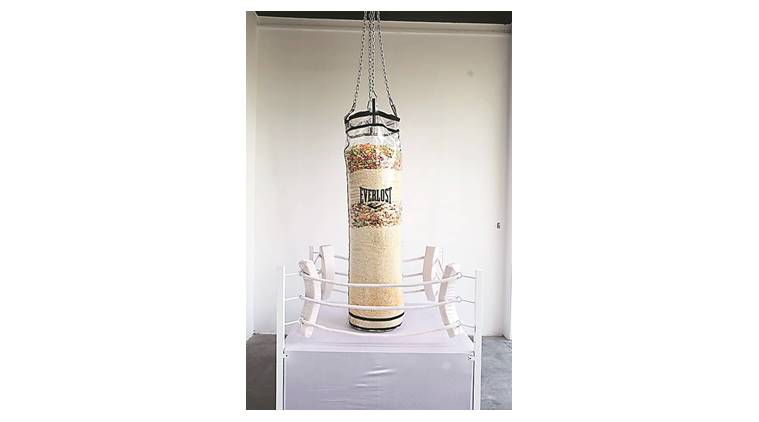An exhibition sheds light on how we consume food and its influence on our ethical, economic, and artistic values.
(Written by Smrti Krishnanunni)
To be startled by a cockroach leaping about a screen isn’t exactly what one expects to encounter in an exhibition that talks about food politics.Natasha Gabriella Tontey’s Pest to Power is an installation that chooses the route of virtual reality to tell the story of a sustainable future led by pests — the cockroach being the only species with the ability to survive after several extinctions. According to Tontey, humans do not care about the waste that they generate with their reckless food practices and the cockroach is capable of feeding off the waste and survive till the end. The artist presents the idea through theory, fiction, codes, recipes and web-based images in this work. Pest to power is on display at the exhibition, “The Food Diplomacy: Makan Ngga Makan Asal Kumpul”, at Delhi’s Korean Cultural Centre. Makan Ngga Makan Asal Kumpul is an Indonesian term that refers to the cultural gathering of family and friends over food. Curator M Haryo Hutomo extends that idea to get together artists who engage in food practices critically related to health, culture, and socio-politics.
“Since some Asian countries have similar cultural backgrounds on food related to bio-political practices and its impact on the way people consume without considering where the food comes from. How do we as a society separate the casual relations inherent in capitalism? The aim of this project is to spread awareness with regards to how the chain of food production and distribution have their exclusive scale in influencing ethical, economic, and artistic values,” says Hutomo.
In a mixed media installation, titled Cooking in Pressure, The Bakudapan, a food study group, has chosen the medium of knitting and hand illustration to showcase their research conducted with the former female political prisoners of 1965. This was when mass killings took place during a coup in the country. They use linen to embroider on and make illustrations using black ink to bring alive imagery of violence on women, indigenous methods of cooking, rat infestation, public defecation affecting vegetation among several other images that are related to one of the darkest socio-political eras in Indonesian history. One of the embroideries is made by Ibu Hartiti, a former female political prisoner.
In Everlost (pictured), artist Fajar Abadi discusses the political trade of food on a regional and global scale. In the installation, we see rice, which is a local staple, and crackers, a foreign edible, stacked one atop another and intertwined in an unnatural fashion inside a transparent punching bag. Taking the idea forward, Adi Sundoro’s lithographs and alugraphs (aluminium plates), created out of readily available kitchen stuff, catch the eye. A set of drawings based on digital print on paper with a coat of chili powder is titled “Grandpa Kitchen: loving, caring, sharing and nostalgia for the bygone childhood days”, and emphasises the role of grandparents in the domestic sphere.
Artists Liyana Popo, Gamaliel and Dhies from House of Natural Fiber, a collective that responds to technological; development and its practical use in daily life, have created a video installation titled Atlas of the dead that talks about the death of the human body and draws on information from morphologic and clinical lab studies to chart the realm of diseases. Meanwhile, Fransisca Retno, a new media artist, conducts a participatory performance by persuading people to be involved in the process of making herbal concoctions with a mixture of species.
On till July 30 at Baek Nam June Hall, Korean Cultural Centre, Lajpat Nagar IV.
Source: Read Full Article


